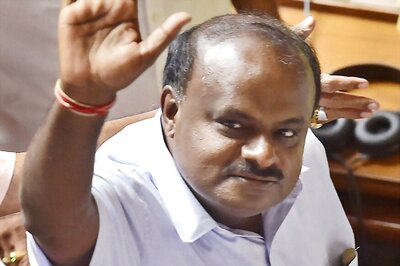
views
Mumbai: The Reserve Bank of India (RBI) is now focussing more on growth after a long spell of rate hikes to curb inflation. In its mid-quarter monetary policy announced on December 16, the banking regulator has kept its key policy rates unchanged: Cash reserve ratio (CRR) at 6 per cent, repo rate at 8.5 per cent, reverse repo at 7.5 per cent and statutory liquidity ratio (SLR) is at 24 per cent.
Here is a synopsis of what RBI said in the policy document, hinting at a change in policy stance in the coming quarters:
The monetary policy actions by RBI is likely to reverse the cycle due to the downside risks to growth. Further rate hikes might not be warranted.
Inflation remains on its projected trajectory while downside risks to growth have clearly increased. The RBI has projected the headline inflation at 7 per cent for March 2012.
In the wake of growing concerns over euro debt crisis, global growth for 2011 and 2012 is now expected to be lower.
On domestic front, the growth momentum in the economy is clearly moderating. Industrial activity is moderating. However, agriculture prospects look promising on the back of expected record kharif output and satisfactory progress on rabi sowing.
The non-food credit growth projection by the RBI too remains unchanged at 18 per cent.
It dismissed speculations that it might revise the non-food credit growth target due to lower credit off-take. The non-food credit or the amount banks lend to individuals and companies rose 17.5 per cent for the fortnight ended December 02, 2011.
Liquidity conditions have remained in deficit during the fiscal. During Nov-Dec (up to Dec 15, 2011) banks net-borrowed Rs 89,000 crore daily on an average through RBI's liquidity adjustment facility (LAF) compared with Rs 49,000 crore in April-October, 2011.
Daily average LAF borrowing is above RBI's comfort zone. RBI may conduct more open market operations (OMOs). This means, more buyback of government bonds. It has already conducted OMOs in three occasions in Nov-Dec, 2011 for a total amount of Rs 24,000 to ease liquidity.
However, there is currently no significant stress in the money market. The overnight inter-bank call money rate is stable. Marginal Standing Facility (MSF), an additional window to support liquidity, remains unutilised.rowth moderated to 6.9 per cent in July-August quarter from 7.7 per cent in April-June, 2011-12.




















Comments
0 comment